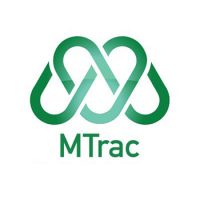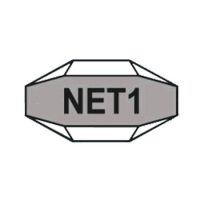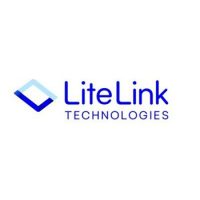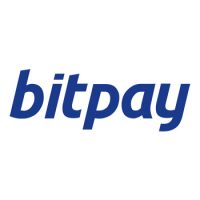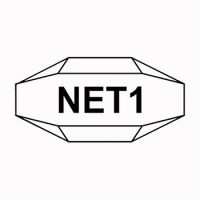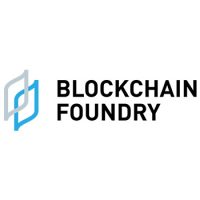Blockchain
‘Quartierstrom’ – Field Test of Switzerland’s First Local Electricity Market Successfully Completed

For one year, 37 households in Walenstadt have sold solar power in a local blockchain-based electricity market. The participants involved in this pioneering project, the first of its kind in the world, were very positive about their experience. As expected, the system led to a substantial increase in self-consumption and self-generated supply. The participants played an active role in the electricity market but were reluctant to pay more for locally produced power.
Switzerland’s first local electricity market has successfully completed field testing in January 2020. For one year, 37 households in Walenstadt traded locally produced solar power within their own neighborhood. Participants could directly buy and sell solar power within their neighborhood via a portal on which the participants could set their own purchase and sales price limits for solar power. The resulting transactions were processed automatically via a blockchain. The local electricity supplier, Water and Electricity Works Walenstadt (WEW), not only provided access to its distribution grid but also purchased surplus solar power and supplied the community with ‘normal’ power when the supply of solar power was insufficient. This innovative project, which is supported by the Swiss Federal Office of Energy (SFOE) as a flagship project, aimed not only to verify technical feasibility in the field but also to study user behavior.
– Cross reference: Picture is available at AP Images (http://www.apimages.com)
Significantly higher consumption of local solar power
After a year in the field, project participants from research and industry give a positive appraisal. Thanks to the local electricity market, the local community the purchase of the of the locally produced solar power almost doubled. The 37 households covered 33% of their electricity demand with solar power produced in the neighborhood – twice as much as beforehand. These figures might have been anticipated, but it was surprising how well the project was received. The participating households played a very active role and perceived the electricity market as green, local, and fair. “After initial skepticism, even the energy industry has shown a great deal of interest and sees a lot of potential in the development. We’ve managed to really provoke discussion,” says Christian Dürr, Managing Director of the Water and Electricity Works Walenstadt. Verena Tiefenbeck, leader of the Bits to Energy Lab at ETH Zurich, also gives a positive appraisal: “Quartierstrom was the first project of its kind in the world, and we did pioneering work on many different fronts. We’re especially delighted that the technology operated effectively – apart from the usual teething troubles.” For the Swiss Federal Office of Energy, the application of these new technologies was a particular area of interest. “The project allowed us to study the extent to which blockchain and artificial intelligence might be suitable for the direct marketing of electricity from decentralized energy sources and what role the energy supplier plays in a bottom-up approach of this kind. These findings should be helpful for the future development of the electricity market,” says Benoît Revaz, Director of the SFOE.
Almost no one wants to pay more
One new feature of the system was that participants could use a portal to set a minimum sales price for their solar power and a maximum purchase price to buy solar power from their neighbors. “The participants frequently adjusted the price limits, especially at the beginning. But the price limit they set for buying local solar power was rarely higher than for normal power from the grid,” says Tiefenbeck. On average, the participants were willing to pay just under 19 centimes per kilowatt hour – less than the cost of mains power, which stands at 20.75 centimes. Fewer than 10% of offers were above this rate, despite the fact that many people had declared their willingness to pay more for local solar electricity in the surveys conducted beforehand. “This gap between attitude and action is seen in behavioral research time and time again,” says Tiefenbeck. The researchers also attribute this to the fact that the participating households knew that local solar power was subject to lower grid fees and that, accordingly, the power suppliers were getting more for their power, even at lower prices. For their part, the households with solar power systems also sought to make a profit, asking for around 7 centimes per kilowatt hour. When selling to the power plant they made only 4 centimes.
Automatic pricing is more effective
In order to compare different market models, the researchers deactivated the feature allowing individual pricing for a period of one month and replaced it with an automatic pricing system. When demand and production coincided, the solar power was distributed locally. The price varied automatically depending on whether the solar power was in relatively scarce supply or in surplus. With individual pricing, on the other hand, a small proportion of the solar power could not be sold because the price requirements of suppliers and consumers did not match. In surveys, a little over half of households stated that they preferred automatic pricing. “What was surprising was that participants who used the portal frequently tended toward automatic pricing and vice versa,” says Tiefenbeck. “Based on our experiences, we don’t consider individual pricing to be decisive for a local electricity market in the future.”
Effectively raising awareness
What does seem to be important, on the other hand, is that participants are able to monitor production and consumption, as well as their purchases and sales, in real time. This function was very popular with users and contributed to raising awareness. Indeed, many participants said that they now use electrical appliances more when the sun is shining. They saw the peak and off-peak tariff system that still applies today as outdated when applied to renewable energies. Christian Dürr: “The participants developed an understanding of the energy market, thereby helping to balance supply and demand. This reduces the burden on the infrastructure and puts surplus power to sensible use.”
Reliable software but a need for hardware optimization
While the software proved highly reliable, the project team repeatedly struggled with hardware failures. As there was no smart meter with an application processor available on the market, the project team had to use devices (Raspberry Pis) with self-developed modules instead. “These devices have an error-prone, SD-card memory system,” says Arne Meeuw, who developed the blockchain system. For larger applications, projects like “Quartierstrom” would require certified and stable smart meters with an integrated application processor that could run different software tools.
The blockchain system, on the other hand, proved highly robust – although its capacity was limited. Twenty-seven prosumers acted as validator nodes to approve the transactions in the blockchain. These nodes represent the critical variable when it comes to scaling. “The system could still handle about five more solar installations,” says Meeuw. The number of consumers could be increased further, on the other hand, and the system would remain stable with up to 600 pure consumers or other clients, such as batteries or flexible loads. “It would be possible to scale the system up by building multiple blockchains for different neighborhoods,” says Meeuw. In turn, these could then exchange electricity between themselves.
Low power consumption
Unlike public blockchains, such as those used for Bitcoin, the Quartierstrom blockchain is private. Moreover, the approval of transactions does not rely on elaborate computational processes. “The nodes reach an agreement on a proposed energy trade,” says Meeuw. This mechanism doesn’t require a great deal of computing power. The small computers that are used as smart meters and blockchain nodes consumed around 3,300 kilowatt hours of energy over the duration of the project. In terms of the volume of power traded in the local market, this consumption amounted to around 4%.
Follow-up project in the pipeline
The pilot phase of the local electricity market as part of the SFOE flagship project has now come to an end. However, a follow-up project has been launched to ensure a seamless transition, albeit in modified form. The user portal has been redesigned and streamlined slightly, and prices are now set automatically. In the coming months, the hardware will gradually be replaced with series-produced equipment, and there are also plans to develop the trading platform into a marketable product. This aim is being pursued by the spin-off “Exnaton”, which was founded by members of the development team at ETH Zurich. One option under development would allow participants to determine their preferred suppliers of local solar power, rather than setting prices. In other words, they could choose to buy electricity from their aunt’s roof or from the farmer who sells them their eggs. After all, “Quartierstrom” has also demonstrated that emotion plays an even bigger role in a local market than price.
Further information:
www.quartier-strom.ch: Background information, the latest news on the project, and live data on electricity production and consumption, as well as self-consumption and self-generated supply within the Quartierstrom community.
Photos and Diagrams
The pictures are available in high resolution on the “Quartierstrom” website:
https://quartier-strom.ch/index.php/en/media/
Project participants
The “Quartierstrom” project is supported by the Swiss Federal Office of Energy (SFOE) as part of the “Pilot, demonstration and flagship projects” program. At the heart of the project was a close collaboration between a broad-based consortium of research and industry.
The “Quartierstrom” project – how does the local electricity market work?
The basic idea of the Quartierstrom project is for locally produced solar power to be consumed locally. In this local electricity market, local residents buy and sell solar power among themselves. The solar power is consumed in the prosumers’ own households first of all; only the surplus is traded within the neighborhood. If the solar power systems produce more electricity than the community is currently using, the Water and Electricity Works Walenstadt (WEW) buys up this surplus power. Conversely, the power company supplies additional power if local production is insufficient.
The buying and selling of solar power are managed directly between the participants themselves via a portal on which the producers can set the minimum price for their solar power. At the same time, the consumers define the maximum price they are willing to pay for local power. The resulting transaction is processed automatically via a blockchain. All participating households have a mini computer installed with a built-in electricity meter and blockchain software. Based on the individual price settings, these blockchain nodes then place quarter-hourly bids for the purchase or sale of solar power and use an auctioning mechanism to calculate whose bid is accepted at which price.
SOURCE Quartierstrom
Blockchain
Blocks & Headlines: Today in Blockchain – May 16, 2025
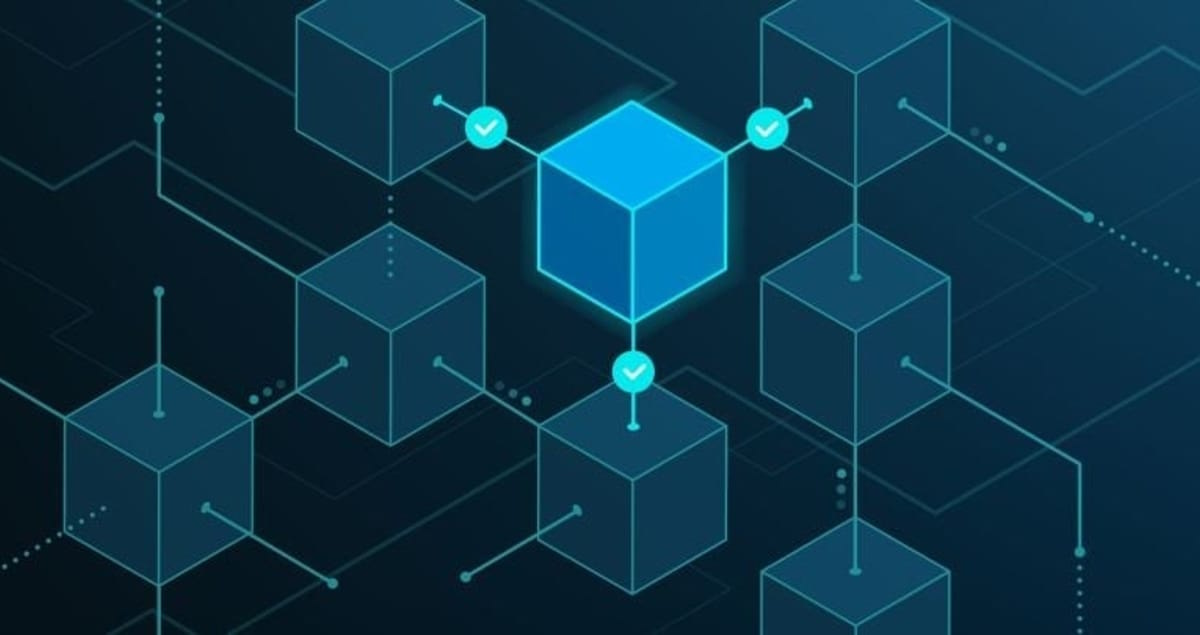
A Pivotal Moment for Blockchain’s Many Frontiers
Today’s briefing arrives at a crossroads in blockchain’s evolution. From AI-driven Layer-1 grant programs to gamified resets in Web3, from supply-chain trust revolutions to exchange-driven token incentives, and high-stakes regulatory leadership shifts, the industry is charting new territory on multiple fronts. As builders, investors, and policymakers navigate this shifting terrain, five stories stand out for their potential to reshape blockchain’s trajectory:
-
Lightchain Protocol AI unveils a $150,000 developer grant program to onboard top builders in AI × blockchain.
-
Blockchain gaming experiences its lowest engagement of 2025, signaling a sector reset toward sustainability.
-
Norwegian Seafood Council research highlights blockchain’s trust-building power in global supply chains.
-
MEXC Exchange announces the Einstein (EIN) listing on July 20, 2025, buoyed by a $50 million rewards event.
-
Summer Mersinger, a US CFTC commissioner, is tapped as CEO of the Blockchain Association, marking a pivotal regulatory turn.
In this op-ed–style briefing, we’ll unpack each development, explore its implications for blockchain, cryptocurrency, Web3, DeFi, and NFTs, and assess how these narratives intersect to define today’s momentum.
1. Lightchain Protocol AI’s $150K Grant: Catalyzing Decentralized Intelligence
What happened: On May 15, 2025, Lightchain Protocol AI—a Layer-1 blockchain optimized for AI workloads—launched its Developer Grant & Ecosystem Incentive Program, pledging up to $150,000 in total funding to on-board teams building dApps, explorers, wallets, analytics dashboards, DeFi protocols, NFT platforms, and AI-powered modules on its network. Grants are milestone-based (up to $5,000 per milestone), accompanied by technical support, co-marketing, and ecosystem visibility. Source: Bitcoin News
Why it matters: Lightchain’s move underscores the growing fusion of AI and blockchain. By allocating resources to builders at the intersection of these technologies, the protocol signals that the next wave of innovation will hinge on intelligent smart contracts, federated learning coordination, and on-chain decision-making. For developers, this grant lowers barriers to entry and emphasizes sustainable, value-driven growth over token speculation.
> “We’re seeking impactful projects that align with Lightchain AI’s goal of bridging AI and blockchain—everything from AI prediction markets to compute marketplaces.” > — Lightchain Protocol AI Core Team
Implications:
-
DeFi & NFTs: Expect AI-augmented lending protocols and NFT platforms with dynamic metadata driven by on-chain models.
-
Ecosystem Growth: Lightchain’s aggressive grant strategy may spur competitors (e.g., Ethereum layer-2s) to bolster their own builder incentives.
-
Governance & Sustainability: The milestone-based approach aligns funding with tangible progress, a model DeFi DAOs may increasingly adopt for resource allocation.
Source: Bitcoin News
2. Blockchain Gaming’s 2025 Low: A “Reset” Toward Quality
What happened: According to Crypto.news, blockchain gaming saw daily active wallets dip to 4.8 million in April 2025—a 10% month-over-month decline and the lowest point of the year for Web3 gaming. Share of the DApp ecosystem for gaming fell to 21%, now tied with DeFi, while AI projects surged to 16% of on-chain activity. Funding also plunged nearly 70% from March to $21 million in April, though Arbitrum Gaming Ventures deployed $10 million from its $200 million fund to support titles like Wildcard, XAI Network, and Proof of Play. Source: Crypto.news
> “Capital is harder to secure, but that’s not necessarily bad. Weak projects are falling away, and funds are flowing into builders laying the groundwork for the next generation of blockchain games.” > — Sara Gherghelas, DappRadar Analyst
Why it matters: The downturn reflects a market recalibration from token-centric models toward user engagement, game mechanics, and interoperability—key for mainstream adoption. High-profile missteps (e.g., Square Enix shelving Symbiogenesis, Sega’s experimental launch of KAI: Battle of Three Kingdoms) contrast with enduring partnerships like Ubisoft + Immutable’s Might & Magic card game.
Implications:
-
DeFi and Gaming Convergence: As DeFi’s share remains steady, expect crossover innovations (e.g., on-chain staking integrated into gameplay).
-
Investor Focus: Sustainable tokenomics over ‘yin-yang’ hype; capital will favor projects with robust retention metrics and revenue models.
-
NFT Utility: Gaming’s reset may accelerate evolution of NFTs beyond collectibles into dynamic, utility-driven assets.
Source: Crypto.news
3. Deepening Trust in Seafood with Blockchain Transparency
What happened: Perishable News reported on May 15, 2025, that the Norwegian Seafood Council found 89% of consumers desire more information on seafood sourcing. Producers are piloting decentralized blockchain solutions to trace products “sea to shop floor,” sharing immutable data on species, harvest location, handling, and quality checks to reassure ethically conscious buyers. Source: Perishable News
Why it matters: While most blockchain discourse orbits finance and gaming, supply-chain applications represent a mass-market use case for Web3. Immutable provenance data combats fraud, illegal fishing, and mislabelling—an urgent concern as global seafood consumption climbs.
Implications:
-
Consumer Engagement: Brands adopting on-chain traceability can premium-price products by verifying sustainability standards, fair labor practices, and environmental impact.
-
DeFi Integration: Tokenized incentives could reward ethical producers or create staking mechanisms for supply-chain stakeholders.
-
Broader Web3 Adoption: Success in seafood may catalyze blockchain tracking in agriculture, pharmaceuticals, and luxury goods.
Source: Perishable News
4. MEXC’s Einstein (EIN) Listing & $50 Million Rewards Event
What happened: PR Newswire announced on May 16, 2025, that MEXC, a leading global crypto exchange, will list the Einstein (EIN) token on July 20, 2025 (UTC). To celebrate, MEXC has launched a $50 million EIN rewards event, offering incentives through trading competitions, referral bonuses, staking pools, and community tasks. Source: PR Newswire
Why it matters: Large-scale rewards events can drive short-term volume spikes and social engagement, but they also test community loyalty and tokenomics viability. EIN’s positioning as a “science-minded” utility token in educational and research partnerships adds thematic depth to what might otherwise be a routine exchange listing.
Implications:
-
Trading & Community Growth: Expect surges in trading volume, potentially setting new ATHs for MEXC’s platform metrics.
-
DeFi Crossplay: EIN holders may see integration into DeFi protocols for governance, liquidity mining, and educational grants.
-
Regulatory Watch: Large-scale token events continue to attract scrutiny over securities classifications and promotional compliance.
Source: PR Newswire
5. Summer Mersinger Becomes CEO of the Blockchain Association
What happened: Gadgets360 reported that on May 14, 2025, the Blockchain Association confirmed that Summer Mersinger, currently a commissioner at the US Commodity Futures Trading Commission (CFTC), will step down on May 30 and begin as the Association’s CEO on June 2. Mersinger has championed balanced, consumer-focused digital asset rules and will spearhead advocacy for fit-for-purpose legislation alongside US regulators. Source: Gadgets360
> “Summer’s knowledge of how elected officials think through complex questions will be vital as we await next steps on stablecoin and market structure bills.” > — Blockchain Association
Why it matters: The appointment bridges regulatory expertise and industry advocacy at a moment when Congress is eyeing stablecoin frameworks and broader crypto oversight. Mersinger’s shift signals a blurring of lines between government and industry, with potential to accelerate law-making and foster public-private collaboration.
Implications:
-
Policy Acceleration: Expect renewed momentum on stablecoin legislation, DeFi disclosures, and market-structure rules by August 2025, per administration timelines.
-
Industry Confidence: Firms may feel emboldened to innovate under clearer regulatory signals, supporting growth in DeFi, NFT marketplaces, and tokenized asset offerings.
-
Global Alignment: US-led regulatory frameworks often influence EU and APAC regimes—this leadership change could ripple through the international policy landscape.
Source: Gadgets360
Conclusion: Five Threads Weaving Tomorrow’s Blockchain Fabric
Today’s headlines paint a multifaceted portrait of blockchain’s ongoing maturation:
-
Ecosystem Incentives: Grant programs like Lightchain’s signal a builder-first ethos, turbocharging AI × blockchain synergy.
-
Quality Over Hype: Gaming’s dip reflects a necessary market reset, steering capital to sustainable, engagement-driven projects.
-
Real-World Utility: Supply-chain transparency demonstrates blockchain’s power beyond finance, enhancing consumer trust.
-
Tokenomics in Motion: Exchange listings and rewards events underscore the ever-evolving interplay between liquidity, community, and utility.
-
Regulatory Convergence: Leadership moves like Mersinger’s appointment highlight the tightening feedback loop between policymakers and the Web3 sector.
As blockchain, cryptocurrency, Web3, DeFi, and NFTs continue to intersect, today’s developments underscore a pivotal shift: the industry is moving from speculative frontiers to pragmatic, real-world applications—backed by funding, governance, and policy frameworks that prioritize longevity and trust. Keep these threads in mind as we watch the next chapters unfold.
The post Blocks & Headlines: Today in Blockchain – May 16, 2025 appeared first on News, Events, Advertising Options.
Blockchain
Saudi Arabia Loan Aggregator Market Report 2025: Retail Digital Payments Hit 70% as Tech Adoption Transforms Saudi Financial Services – Competition, Forecast & Opportunities to 2030
Saudi Arabian Loan Aggregator Market
Blockchain
Mercurity Fintech’s Subsidiary Grows Cross-Border Business Advisory Services with New Asia-Pacific Healthcare Client Engagement
-

 Blockchain4 days ago
Blockchain4 days agoBlocks & Headlines: Today in Blockchain – May 12, 2025 | Rootstock, Zimbabwe Carbon Registry, Fastex, 21Shares, The Blockchain Group
-

 Blockchain Press Releases4 days ago
Blockchain Press Releases4 days agoBullish partners with the Gibraltar Government and GFSC to pioneer world’s first crypto clearing regulation
-

 Blockchain Press Releases4 days ago
Blockchain Press Releases4 days agoBybit Introduces BOB to P2P: Bolivian Traders Can Now Buy, Sell in Local Currency and Earn Commissions
-

 Blockchain Press Releases2 days ago
Blockchain Press Releases2 days agoFintica AI and Mima Wallet Announce Strategic Partnership and Launch Joint Venture, Fintica Crypto Ltd
-

 Blockchain Press Releases4 days ago
Blockchain Press Releases4 days agoIndependent Audit from Hacken Confirms MEXC’s Strong Security Standards
-

 Blockchain Press Releases5 days ago
Blockchain Press Releases5 days agoHashKey Group Announces Launch of HashKey Global MENA with VASP License in UAE
-

 Blockchain1 day ago
Blockchain1 day agoBlocks & Headlines: Today in Blockchain – May 15, 2025 (BTC’s Push, Pi Network Fund, Stablecoin Levers, JPM Pilot, OKX × Man City)
-

 Blockchain1 day ago
Blockchain1 day agoBDM Digital Initiates Promising Dialogue with Stanford Law School in Pursuit of Strategic Partnerships in Silicon Valley


















